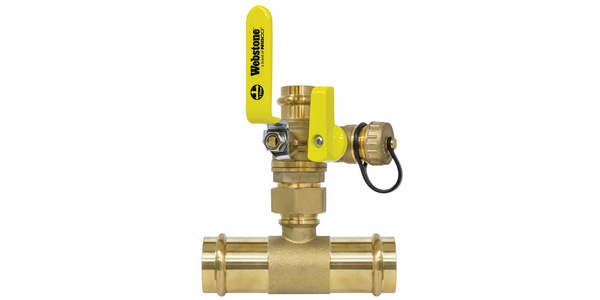HARDI’s First Ever Emerging Leaders Conference an Overwhelming Success
COLUMBUS, Ohio — Heating, Air-Conditioning and Refrigeration Distributors International hosted 50 of its younger executive members at the first Emerging Leaders Conference, held July 20-22 in San Francisco, California.
HARDI defines an emerging Leader as “Any employee of a HARDI member who has been acknowledged as having the talent and potential to someday join the ranks in the executive level of the organization.” The mission of the conference was to have next-generation leaders in the HVAC industry experience a gathering devoted exclusively for leadership development. Being able to network with other individuals facing the same challenges was an important part of the conference as well.
“I attended the Emerging Leaders Conference to enhance and further develop my leadership abilities, while networking with people experiencing the same elements of our industry,” said Brandon Bateman, a director with Airefco, a wholesale distributor company located in the northwest U.S.
Fifty HARDI members identified as emerging leaders attended the event. With the goal of 50 attendees easily met, it was up to the organizers, mentors and presenters to bring their “A game.” They proved to be up to the challenge.
One activity, a mentor-led roundtable discussion, allowed the emerging leaders to engage in conversations with a group of HARDI mentors who shared stories, gave advice and offered opinions regarding real world, tactical problem solving. Mentors included Royce Henderson, president of Charles D. Jones & Co. and current president of HARDI and Tom Roberts, president of cfm Distributors, Inc. and current secretary/treasurer of the HARDI Board of Directors. Richard Cook, president and general manager of Johnson Supply, and Bud Mingledorff, chairman of the board of Mingledorff’s Inc., both of whom are former presidents of HARDI, were also mentors.
“The high caliber of mentors, combined with the leadership seminar by Randy Disharoon and conference activities, provided a great atmosphere for building leadership skills and expanding your network,” said Brandon Bateman, Airefco.
Randy Disharoon, director, Global Strategic Accounts, spoke to the group about developing their leadership skillset from all angles. Utilizing a Lego building block activity, he illustrated the concepts of building leadership within.
“Randy was able to illustrate the challenges of communicating effectively in a very interactive way. It is impossible to not reflect on your own communication style after participating,” Bateman said.
Emily Saving, HARDI’s director of Education and Research Foundation, believes this conference has set the bar high for emerging leaders events in the future. “I was very pleased with not just the turnout, but the energy and excitement that all of the attendees and mentors brought to the meeting. We have a fantastic bunch of young executives and I am excited to work with them on more events like this.”



